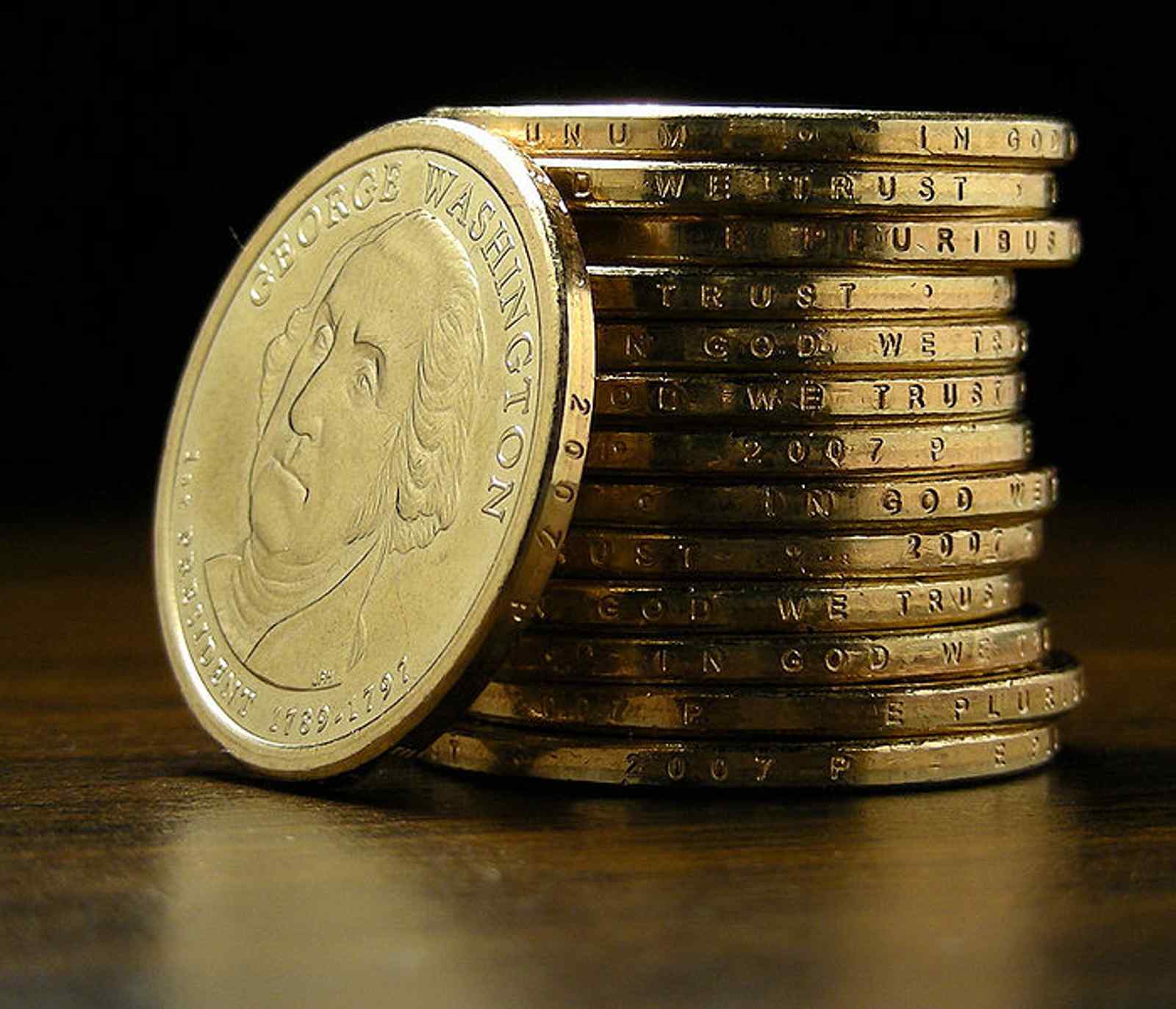The Godless Dollars
In 2007 the US Mint started releasing a new series of dollar coins. The series would include four designs a year for up to ten years and each design would feature the portrait of a US president, in the order in which he served – earning them the name “the presidential dollar series.” This was the mint’s third attempt in 30 years. They had already failed to secure broad public acceptance of a circulating $1 coin in 1979 with the Susan B. Anthony dollars and in 2000 with the Sacagawea Golden Dollars.
They keep trying – supposedly – because $1 coins could save government money. Coins last much longer in circulation – up to 30 years for coins vs. 18 months on average for bills. Their attempts never work because people like the bills more and the US doesn't stop making $1 bills when the coins are introduced. In the European Union, the UK, Canada and elsewhere coins have successfully replaced low denomination bills because the government stops making the bills and pulls them from circulation. People switch if you give them no choice.
Really the series was just another excuse to make money for the government through coin collectors. The government makes a coin for six cents and sells it to people for $1. When collectors withdraw money from circulation for a collection it’s pure profit for the mint. They can also make money off of high-priced special mint and proof sets. The state quarters program was about to end, and the Mint needed a new revenue stream.
As part of the new program the mint used new machines to add edge incused letters - writing on the edge. They moved "In God We Trust" and "E pluribus Unum" to the edge of the coin to leave more space on the face for the design/portrait. The coins were made with a two-step process instead of the single step process used to make all other modern circulation American coinage. First the coins were stamped with the dyes and then the smooth-edged coins were taken to the new machines to add the edge letters.
When you think about it, it was almost inevitable that at some point a batch of coins was going to skip the second step and the edge lettering would be forgotten. The mint's quality control process lagged behind the release of the new coins – their established methods weren’t geared towards checking the edges of the coins for lettering because they hadn’t needed to. The US mint is normally extremely good at keeping flawed or mis-struck coins – called “error coins” – from getting into circulation. It wasn't long though before hundreds of Washington dollars – the first design in the series – were released without the edge writing.
While the coins technically lacked both of the usual mottos and were dateless, they were immediately named "Godless dollars"
Conspiracy theorists and paranoid Christians insisted that this was a deliberate attempt by the "shadow government" to "remove God from our money." It was a test! A trial balloon to gauge our reaction!
This was false and roundly denied by the US Mint, but some people will believe what they want. This is one case where the Mint’s track record for quality worked against it. The conspiracy theorists claimed there was no way that a mistake like this could have happened with hundreds of incomplete coins escaping detection by accident! The mint was too good to have just made a mistake like this!
For anyone familiar with the situation and with systems reliability research this outcome was perfectly predictable, however. People are notoriously error-prone. Humans tend to fail about 10% of the time when conducting basic, routine tasks. When the task is more complex or when the activity deviates from normal, established behavior human error rates rise rapidly. The mint had not done enough to guard against an error like this when introducing the new production process. They failed to predict and get ahead of the problem and their famously good quality control system failed epically. There was no need for a conspiracy or maleficence – this was just the perfect storm for the mint.
Error coins are rare. Even with a massive release like this, the “Godless dollars” numbered in the low thousands. The normal Washington Dollars, with the edge lettering, numbered in the hundreds of millions. Every collector wanted one. The coins were quickly hunted down and scooped out of circulation and prices skyrocketed. Shortly after the incident the coins were selling for $400+ in uncirculated condition – it would appear that coin collectors are not necessarily put-off by Godlessness.
“In God We Trust” = $1. “Godless” = $400. Some might call that ironic. In the days of my apostasy, I mostly just find it a little – dare I say it – priceless.
The solution to all the uproar was, of course, an act of congress. On December 26, 2007 President Bush signed HR 2764 into law. This required that “In God We Trust” be placed on the obverse or reverse of the coin – not on the edge. The change in the law came too late to change the 2008 designs, so the motto was moved to the obverse of the presidential dollars and off the edge starting in 2009. “E Pluribus Unum” stayed on the edge.
References:
1. http://presidentialdollarguide.com/presidential-dollar-edge-lettering/

